#Ravenscrag
Text

In the dungeon vaults of Ravenscrag Castle (Ken Simpson, Ravenscrag, “Universal Fantasy Supplement” for D&D or other systems, Judges Guild, 1981)
#D&D#Dungeons & Dragons#Ken Simpson#Ravenscrag#dungeon#vault#arch#dnd#Judges Guild#Dungeons and Dragons
116 notes
·
View notes
Text

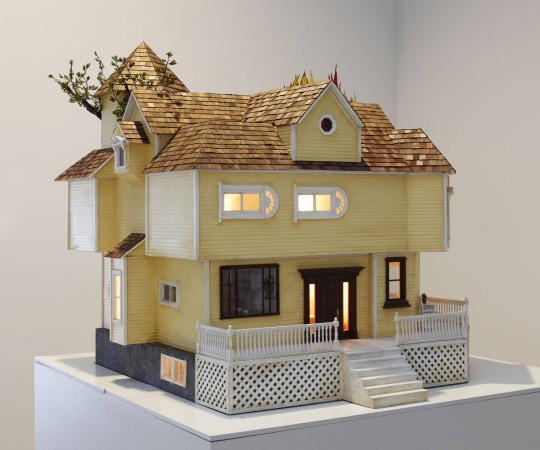

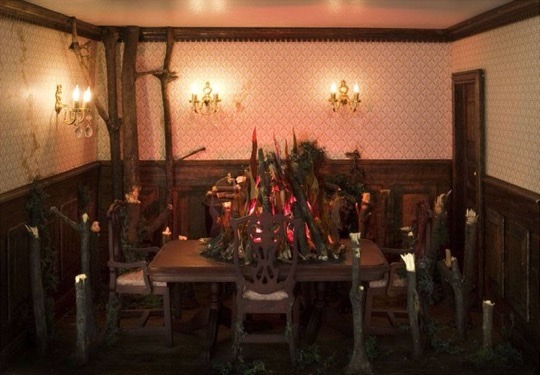
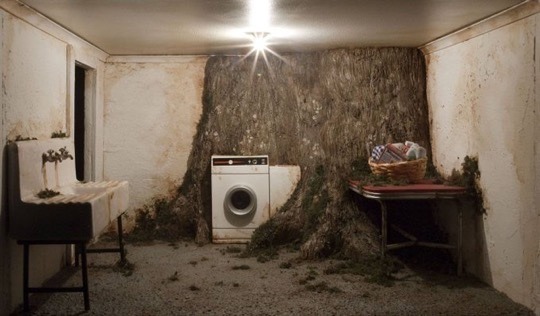
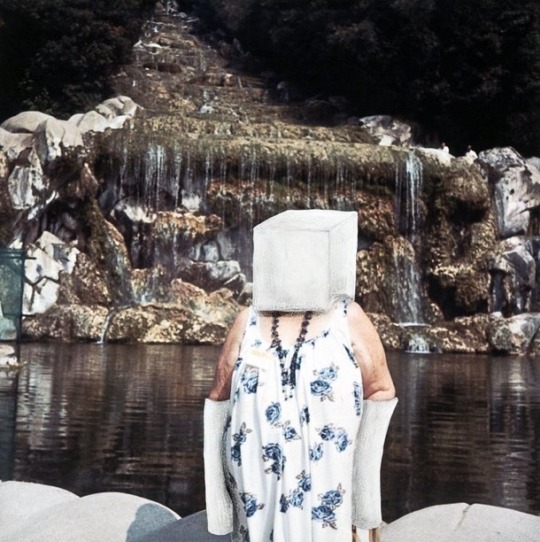
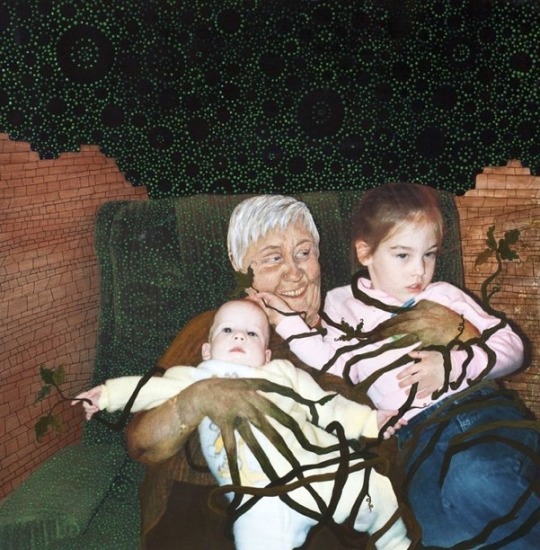


House on Fire - Sarah Anne Johnson
No Alice in Wonderland fantasy, the work is the centerpiece of Johnson’s very serious House on Fire project (at the Julie Saul Gallery, running September 17 through November 14): the artist’s impressions and memories—in sculpture and altered photographs—of one of the most bizarre, and disturbing, crimes ever committed by the U.S. government.
In 1956, Johnson’s maternal grandmother, Velma Orlikow, sought help for her severe postpartum depression at Montreal’s Allan Memorial Institute, a hospital housed inside a Gothic mansion formerly called Ravenscrag. In fact, real horror did await: Orlikow and other patients had no idea that they’d been lured into the world of MK-ULTRA—a secret program, funded by the CIA, to develop brutal methods for mind control. At the hands of a doctor (and brainwashing specialist) named Ewen Cameron, Orlikow endured years of torture, involving, Johnson says, “shock treatment way past the recommended levels” and “crazy cocktails of drugs, including LSD mixed with speed.” She didn’t escape, Johnson explains, because “back then, you didn’t doubt your doctor,” then adds, dolefully, “I think she fell in love with him.” Another glance into that dollhouse reveals two clay figures inside a snow cave: the stout Orlikow, naked with a bag on her head, dancing with Cameron.
37 notes
·
View notes
Text

welcome to ravenscrag mansion of montreal, canada. it is in real life one of the most haunted buildings in the world and there have been many sightings here. supposedly there is a child cemetery in the back with unmarked graves. some people have reportedly heard their disembodied voices crying in certain hours of the night. this mansion was repurposed as a psychiatric facility which caught the attention of the CIA during the cold war. MK-ULTRA's most infamous psychological experiment was conducted here under the name subproject 68. patients were put in artificially induced comas and injected with heavy doses of hallucinogens such as mescaline, pcp, and lsd, and then were forced to listen to looped tapes for days at a time.
1 note
·
View note
Photo

Entertainment earth exclusive Pop showcases Stitch voiced by Chris Sanders from Disney Lilo & Stitch (2002). This pop shows Stitch playing the ukulele. The ukulele was first made poplar by Manuel Nunes, Augusto Dias and Jose do Espirito Santo, who arrived in Hawaii on the Ravenscrag in 1879 from the Portuguese Islands of Madeira. My favorite of course is Israel kamakawiwo'ole singing "Over The Rainbow". #liloandstitch #stitch #cartoon #chrissanders #luki #derekstephenprince #funkoexclusive #funkopop #funko #speedandgrace #speedandgrace2 #entertainment #entertainmentearth #manuelnunes #augustodias #josedoespiritosanto #ravenscrag #isarelkamakawiwo #israelkanakawiwoole #ukulele #hawaii #overtherainbow #portuguese #madeira https://www.instagram.com/p/CTTf4-arQgk/?utm_medium=tumblr
#liloandstitch#stitch#cartoon#chrissanders#luki#derekstephenprince#funkoexclusive#funkopop#funko#speedandgrace#speedandgrace2#entertainment#entertainmentearth#manuelnunes#augustodias#josedoespiritosanto#ravenscrag#isarelkamakawiwo#israelkanakawiwoole#ukulele#hawaii#overtherainbow#portuguese#madeira
1 note
·
View note
Text
Machetes and Rajãos and Taropatches, Oh My!
Country Musicians, from A History of Madeira, 1921 (Collection of John King)
In this month’s From the Vault, we look back at John King’s 2008 Ukulele Yes! article, shedding light on some of the early history of the ‘ukulele and its predecessors in late-nineteenth century Hawaii.
from the vault Aug 24, 2021
In a 1922 article published in Paradise of the Pacific, João Fernandes (1854-1923) was…

View On WordPress
0 notes
Photo

This was a school project and I really liked how it turned out and yeah.
I have emotions about Clay. It might be Stockholm Syndrome at this point.
Infographic made by https://www.canva.com/
References:
Chapter 17 - Paleogeographic Evolution of the WCFB. (2020, September 13).
Retrieved from https://ags.aer.ca/atlas-the-western-canada-sedimentary-basin/chapter-17-paleogeographic-evolution-the-wcfb
Earle, S. (2015, September 01). 5.4 Weathering and the Formation of Soil.
Retrieved from https://opentextbc.ca/geology/chapter/5-4-weathering-and-the-formation-of-soil/
Gaines, R. R., Hammarlund, E. U., Hou, X., Qi, C., Gabbott, S. E., Zhao, Y., . . . Canfield, D. E. (2012, April 03). Mechanism for Burgess Shale-type preservation. Retrieved from https://www.pnas.org/content/109/14/5180
Panchuk, K. (n.d.). 8.4 Weathering and Erosion Produce Sediments.
Retrieved from https://openpress.usask.ca/physicalgeology/chapter/8-4-weathering-and-erosion-produce-sediments/
Physiographic Regions. (n.d.).
Retrieved from https://www.thecanadianencyclopedia.ca/en/article/physiographic-regions
Rice, P. M. (2015). Pottery Analysis, Second Edition: A Sourcebook. [VitalSource Bookshelf].
Retrieved from https://bookshelf.vitalsource.com/#/books/9780226923222/
The Mineral and Gemstone Kingdom: Home. (n.d.). Retrieved from https://www.minerals.net/
Photo References:
Earle, S. (2015, September 01). 5.4 Weathering and the Formation of Soil.
Retrieved from https://opentextbc.ca/geology/chapter/5-4-weathering-and-the-formation-of-soil/
Hansen, T. (n.d.). Retrieved from https://digitalfire.com/article/ravenscrag slip is born
Kaolinite: The clay mineral kaolinite information and pictures. (n.d.). Retrieved from https://www.minerals.net/mineral/kaolinite.aspx
Minerals, D. M. (n.d.). Illite Mineral Specimen For Sale. Retrieved from https://www.dakotamatrix.com/products/21973/illite
Pcm_admin. (2020, March 19). Smectite clay – a dog's best friend! Retrieved from https://www.quarrymagazine.com/2018/10/07/smectite-clay-a-dogs-best-friend/
Royal Ontario Museum and Parks Canada. (2011, June 10). The Burgess Shale. Retrieved from https://burgess-shale.rom.on.ca/en/science/burgess-shale/03-fossils.php
1 note
·
View note
Text
Ukulele - Hawaii's Most Well-known Musical Instrument
Ukelele ( spelled ukelele in britain, abbreviated to uke; pronounced yoo-kuh-ley-lee [American English] or oo-koo-ley-ley [original Hawaiian]) is really a small, guitar-like lute with four to ten strings. Coded in the 1880s, the ukulele is the Hawaiian interpretation from the Portuguese braguinha.
Hawaii's most popular guitar produces big tone and sweet sound. Ukuleles usually come in 4 sizes: Soprano (or what Hawaiians refer to as Standard size), Concert, Tenor , and Baritone. The Solid Body Cutaway is often a more recent innovation.
Ukuleles are typically manufactured from wood, although there are a handful of models manufactured from plastic or possibly a composite of plastic and wood. Expensive models are produced from hardwood (e.g.mahogany, kulawood, spruce, and sequoia), the priciest which are manufactured from koa tree.
A typical ukulele includes a figure 8 shape like that of the small acoustic guitar. There are also other interesting shape variations for example oval (called pineapple ukulele), boat paddle, and square (usually made from a classic wooden cigar box).
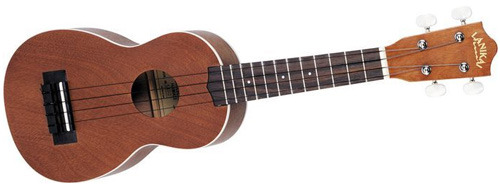
History
Ukulele was taken to the Hawaiians by Portuguese immigrants. To celebrate arriving on August 23, 1879, Joao Fernandes played Portuguese folk songs around the wharf by using a braguinha borrowed from a friend. Hawaiians who witnessed him about the dock where so impressed not only together with his music, but in addition using the speed of his fingers: i felt like they danced throughout the fingerboard. Hence, they known as the instrument "ukulele," meaning "jumping flea."
(Queen Lili'uokalani, the final monarch of Hawaii, gave an alternative version for the origins of "ukulele". She thought ukulele meant "the gift that came here," from uku meaning "the gift" and lele meaning "to come.")
There are 419 immigrants aboard the ship Ravenscrag, but three people could be the first to ascertain ukulele shops. We were holding Manuel Nunes, Augustine Dias, and Joao Fernandes.
Within 10 years following the arrival in the Portuguese, the ukulele became Hawaii's most popular instrument. It is stated that Joao Fernandes was obviously a key behind this, as he spent time and effort playing around Honolulu together with his instrument.
Ukelele: A royal endorsement
It turned out also from Fernandes that King Kalakaua first heard
the songs from your ukulele, but he learned to try out it from Augusto Diaz. He encouraged it had become played during royal gatherings. A patron of arts, King Kalakaua's enthusiasm over ukulele made it more acceptable to individuals of Hawaii. It had been played by Hawaiian all walks of life--- from taro farmers to fishermen to royalties. Other royalties who learned the best way to play included Queen Emma, Queen Lili'uokalani, Prince Leleihoku, and Princess Likelike.
In 1915, ukulele's popularity gone after the mainland beginning in San Francisco during the Panama Pacific International Exposition. Therefore, ukulele sales increased. Along with its sweet sound,
From US the mainland, ukulele gone after great britain also to all of those other world. The ukulele even became an icon with the Jazz Age.
To learn more about best cheap ukulele just go to our web portal.
1 note
·
View note
Photo
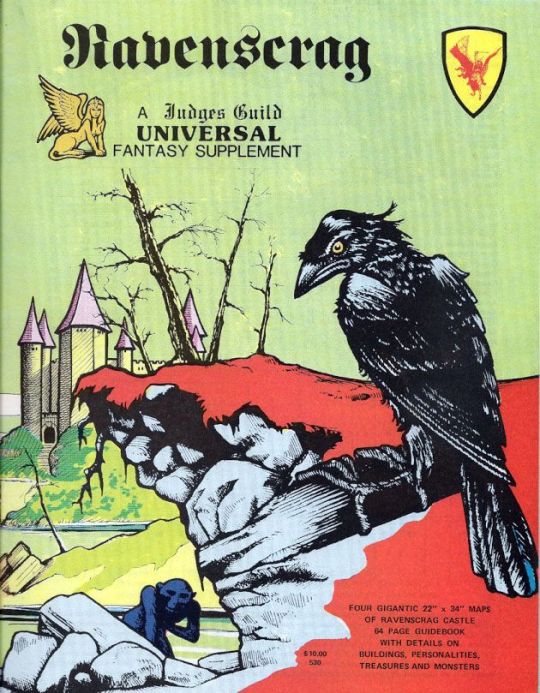
Ravenscrag ~ Judges Guild (1981)
20 notes
·
View notes
Text
What, millions?
Ravenscrag, built for Sir Hugh Allan in 1863
—ooo—
I have continued to research Scots in Canada. They were fur traders and became were wealthy. They later became explorer. As fur traders, they founded the North West Company (1789) which competed with the Hudson Bay Company (established in 1670). They lived in the Montreal’s Golden Square Mile (mille carré doré) and socialized at the Beaver…
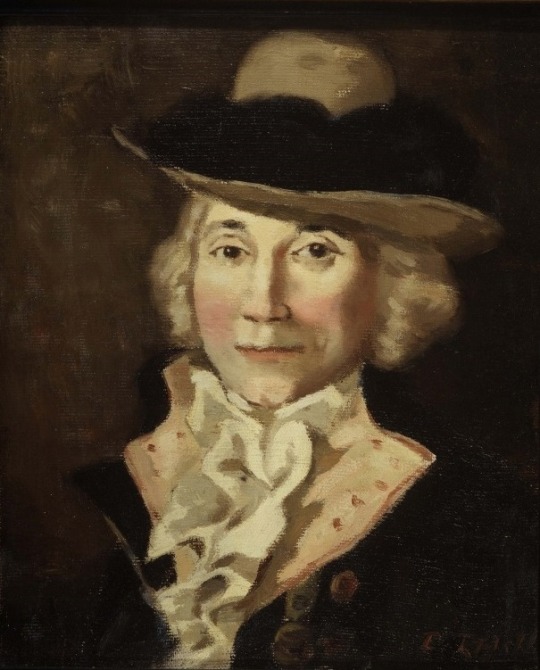
View On WordPress
0 notes
Text
S4E01 - Stuart Yoshida
Season 4 is here – welcome to the first episode for 2021! Today I talk to fellow ukulele podcaster Stuart Yoshida, who has been making the Ooktown podcast for around 10 years with co-host Doug Brown. As well as talking podcasting, Stuart tells me the story of his first ukulele (blue house, brown roof, black dog) and the secret origin of the ukulele (two plants, one bird, three people, one ship). Enjoy!
Some show-related links below:
Ooktown episode 97 – Giggly and Fluffy
Molly Lewis
Brad Bordessa
The Live Ukulele Podcast
Joco Cruise
John Atkins
Grace Vanderwaal
Gomes Guitars & Ukuleles
This Week in Tech podcast
Danielle Ate the Sandwich
Gerald Ross
Aldrine Guererro
Jake Shimabukuro
Lin-Manuel Miranda
Hamilton
ʻōhiʻa lehua plant
Kōlea bird
Hōkūleʻa – Star of Gladness
SS Ravenscrag
Songs played on the show:
“Christmas Time is Here” – Vince Guaraldi & Lee Mendelson, 1965
Go to the Ukulele Is The New Black YouTube channel for a playlist to hear these songs as well as other content relating to the episode
Ukulele is the New Black is produced by me, Meredith Harper. I wrote the theme tune and I performed it with Janine Chandler, Jim Croft, Jasmine Fellows, Paul Marsh, Sandra Shaw and Chris Williams. Seb Carraro does the graphic design.
Thanks to my $10 and over Patreon supporters for helping me to make this podcast:
Ukulele Legend: Linda Dodwell
Ukulele Champions: Debbie Hoad, Maja Zweck & Christopher Boatwright
The music played in this episode is licenced under a Podcasts (Featured Music) agreement with APRA AMCOS.
Another great episode of Ukulele Is The New Black
0 notes
Photo

Ravenscrag Castle cross section, revealing the hidden dungeon levels deep below (Ravenscrag, “Universal Fantasy Supplement” for D&D or other systems, Judges Guild, 1981; “cartography and drafting by Derek Watson, art and design by Ken Simpson”)
#D&D#Dungeons & Dragons#Ravenscrag#dungeon#dungeon cross section#cross section#castle#fantasy castle#Ravenscrag Castle#Derek Watson#Ken Simpson#Judges Guild#dnd#Universal Fantasy Supplement#Dungeons and Dragons#1980s
208 notes
·
View notes
Text
A História , Origem e influência do Cavaquinho no Samba .
A História do Cavaquinho
O cavaquinho é um instrumento de quatro cordas de pequenas dimensões, com o formato de um violão.. Além deste nome encontramos ainda, para o mesmo instrumento , outros nomes como : machimbo, machim, machete, manchete ou marchete, braguinha ou braguinho e cavaco.
Dentro da categoria geral com aquelas características, existem atualmente em Portugal continental dois tipos de cavaquinhos, que correspondem a outras tantas áreas: o tipo minhoto e o tipo de Lisboa.
A Origem do Cavaquinho
A origem do cavaquinho é duvidosa. Eventualmente vindo para Braga por intermédio dos biscainhos. De fato, existe na Espanha um instrumento semelhante ao cavaquinho, da família das guitarras - o requinto - de quatro cordas, braço raso com o tampo e dez trastos, que afina do grave para o agudo E acrescenta ainda: sem poder precisar a data da sua introdução, temos que reconhecer que o cavaquinho encontrou no Minho ,uma província portuguesa , como consequência da predisposição do temperamento musical do povo pelas canções vivas e alegres e pelas danças movimentadas ...
Cavaquinho de Lisboa
O cavaquinho de Lisboa, é semelhante ao minhoto pelo seu aspecto geral, dimensões e tipo de encordoamento. Difere essencialmente deste pela escala que é em ressalto, elevada em relação ao tampo, e pelo seu número de dezessete trastos. O cavalete difere do dos cavaquinhos minhotos, tratando-se de uma espessa régua linear com um rasgo horizontal escavado a meio onde a corda prende por um nó corredio.
Toca-se ponteado com plectro, tal como os instrumentos desse gênero do tipo dos bandolins, produzindo-se tremolo sobre cada corda. Enfim, em certos casos aliás pouco frequentes, um instrumento parecido com o cavaquinho pelo seu formato geral e dimensões - mas com um número superior de cordas e um braço mais largo - leva também o nome de cavaquinho, embora não partilhe com ele a mesma estirpe e natureza.
ILHA DA MADEIRA
Na ilha da Madeira existe também o correspondente do cavaquinho com os nomes de braguinha, braga, machete, machete de braga ou cavaquinho. O braguinha tem as mesmas dimensões e número de cordas dos cavaquinhos continentais, possuindo a forma e as características do cavaquinho de Lisboa. O encordoamento parece ser de tripa, mas o uso popular substitui geralmente a primeira corda por fio de aço cru e a sua afinação é ré-sol-si-ré, do grave para o agudo.
CABO VERDE
O cavaquinho existe também em Cabo Verde, num formato maior do que o do seu irmão português, com escala em ressalto até à boca e dezesseis trastos, encontrando-se também ligado às formas tradicionais da música local.
Relativamente à sua expansão geo cultural, o cavaquinho parece constituir uma espécie fixada entre nós primordialmente no Minho, de onde irradiou para outras regiões - Coimbra, Lisboa, Algarve, Madeira, Açores, Cabo Verde e Brasil.
Longe do seu foco de origem e da sua tradição mais castiça, ele modifica a sua forma por influência e associação a outras espécies ali existentes, conservando o seu carácter popular mas adquirindo um novo status mais elevado na cidade do Funchal.
ILHAS DO HAWAI
Nas ilhas do Hawai existe um instrumento igual ao cavaquinho - o “ukulele” que parece ter sido para ali levado pelos portugueses.
Tal como o nosso cavaquinho, o ukulele havaiano tem quatro cordas e a mesma forma geral. Certos violeiros fazem-no com o braço em ressalto e dezessete trastos, do mesmo modo que os cavaquinhos de Lisboa, da Madeira e do Brasil; mas existem ukuleles de fabricação inglesa do tipo do cavaquinho minhoto, de braço raso com tampo e apenas doze trastos.
O cavaquinho foi introduzido no Hawai pelo madeirense João Fernandes que viaja para Honolulu no barco à vela Ravenscrag em a 23 de Agosto de 1879 e João Fernandes, (de acordo com um relato então feito à revista Paradise of the Pacific, de Janeiro de 1922), ao desembarcar, trazia na mão o braguinha com que entretivera os demais companheiros na longa viagem. Os havaianos, quando ouviram João Fernandes tocar o pequeno instrumento, ficaram encantados e logo lhe deram o nome de ukulele - que significa pulga saltadora - figurando o modo peculiar como é tocado. Seguidamente, João Fernandes generalizou o seu uso em danças, festas e serenatas locais tendo depois formado um conjunto com Augusto Dias e José Luis Correia.
BRASIL
O cavaquinho no Brasil, figura em todos os conjuntos regionais de choros, , sambas, cateretês, etc., ao lado da viola, violão, bandolim, clarinete, pandeiro, rabecas, guitarras, flautas, oficleides, reques reques, puita, canzá e outros, com carácter popular mas urbano.
Este cavaquinho difere do minhoto tendo - como os de Lisboa e da Madeira - o braço em ressalto sobre o tampo, 17 trastos e boca redonda possuindo menores dimensões totais. A sua afinação mais usual é com o acorde de sol maior invertido, similar à da Madeira ou de certos casos minhotos, surgindo ainda afinações diversas.
O CAVAQUINHO E SUA PARTICIPAÇÃO NAS ORIGENS DO SAMBA
Existem várias versões acerca do nascimento do termo "samba". No Brasil, acredita-se que o termo "samba" foi uma corruptela de "semba" (umbigada), palavra de origem africana - possivelmente oriunda de Angola ou Congo, de onde vieram a maior parte dos escravos para o Brasil.
Um dos registros mais antigas da palavra samba apareceu na revista pernambucana O Carapuceiro, datada de fevereiro de 1838, quando Frei Miguel do Sacramento Lopes Gama escrevia contra o que chamou de "samba d'almocreve" - ou seja, não se referindo ao futuro gênero musical, mas sim a um tipo de folguedo (dança dramática) popular de negros daquela época. De acordo com Hiram da Costa Araújo, ao longo dos séculos, as festas de danças dos negros escravos na Bahia eram chamadas de "samba".
Em meados do século XIX, a palavra samba definia diferentes tipos de música introduzidas pelos escravos africanos, sempre conduzida por diversos tipos de batuques, mas que assumiam características próprias em cada Estado brasileiro.
Para saber mais acesse : http://cursospelainternetagora.com.br/curso-como-tocar-cavaquinho/
1 note
·
View note
Audio
MKUltra Subproject 68 at Ravenscrag | Canada https://audioboom.com/posts/7695403-mkultra-subproject-68-at-ravenscrag-canada
0 notes
Photo
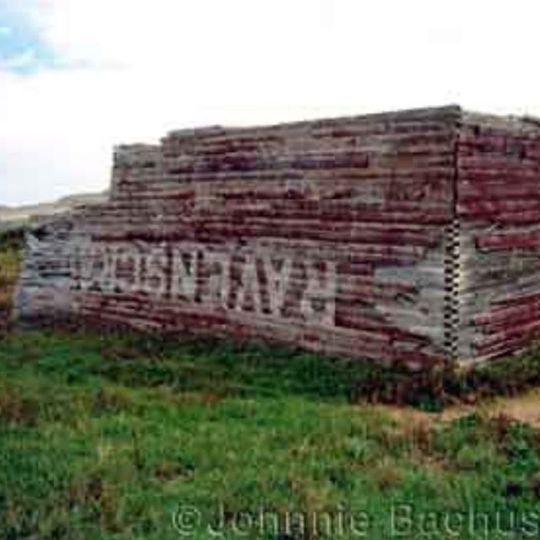
Not my photo, but apparently when demolishing the grain elevators in Ravenscrag, one chunk came down upside down, the name still on it. It sat there for a number of years... https://ift.tt/3b9cxes
0 notes
Text
The plot thickens...
Now while many people argue that the braguinha is the origin and roots of the ukulele, others argue that it is merely just the “father.” They suggest the “rajão” is its mother. People attribute the shape and physical form of the ukulele to come from its father; however, it is said that its personality and tuning come from the rajão. Like how the braguinha was connected to a four-string guitar, so the rajão is compared to the functioning of a rhythm guitar. In a different story I read about the origins of the Ukulele, some pieces paralleled the other legend, while others contrasted it a bit. As mentioned before, it did speak of Manuel Nunes coming aboard the Ravenscrag and taking a five stringed instrument, removing one of its string and having that become the ukulele. This story even mentioned how that contradicted most histories narratives of the braguinha being the forerunner of the ukulele.
0 notes
Photo
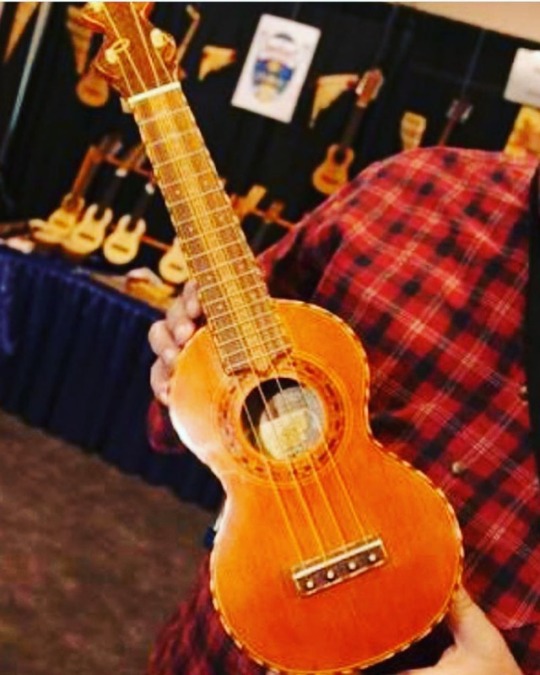
De acordo com o ‘Ukulele Guild of Hawai’i, o primeiro instrumento, uma “braguinha” (típica da ilha de Madeira) chegou ao Havaí em 1879 a bordo do navio Ravenscrag, que veio direto de Madeira. Duas semanas depois de chegarem, o jornal local reportava que “Madeirenses recém-chegados aqui têm encantado a população com concertos noturnos de rua, (…) com uma música doce, feita num instrumento que é uma mistura de violão com banjo”. Manuel Nunes, José do Espírito Santo e Augusto Dias, marceneiros e músicos que estavam no Ravenscrag, resolveram então começar a construir o instrumento utilizando a madeira disponível nas ilhas na época, a koa, e comercializá-lo. A koa dava ao instrumento uma sonoridade peculiar e aos poucos o instrumento foi se “modificando” até chegar ao que é hoje. Os três portugueses são considerados os pais do ‘ukulele. O som do ‘ukulele encantou o rei havaiano Kalakaua, que requisitava concertos com frequência aos seus súditos. Um dos assistentes do rei tocava o tal “violão português” de maneira muito ágil, e como seu apelido perante o rei era ‘Ukulele (que significa “pulga saltitante” em havaiano), terminou batizando sem querer o instrumento. Hoje, o instrumento já se popularizou como “identidade havaiana”, sempre acompanha apresentações de hula (esta sim, uma dança nativa havaiana), em geral na variante ‘ukulele elétrico. É sem dúvida a maior contribuição portuguesa à cultura das ilhas do Pacífico. #ukelele#ukuleles#ukulelesongs#ukulelelife https://www.instagram.com/p/Bs556jqHdGM/?utm_source=ig_tumblr_share&igshid=1e1ecpcqzjwud
0 notes